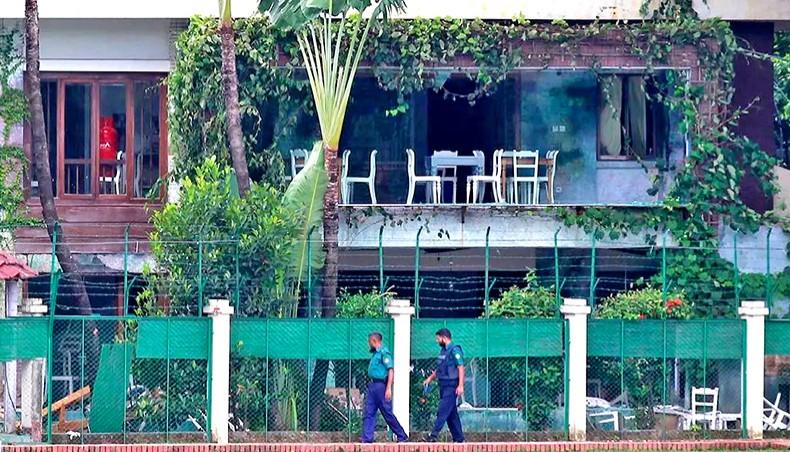
Does Islamic extremism have a future in Bangladesh?
IT IS a multi-layered question, which, therefore, has multiple answers. Extremism itself has many layers — from violent extremism to structural extremism — and, like all extremism, threatens the state. Yet it is also a social issue because terrorism/extremism arises not from state agencies but society. They are clubbed together as ‘non-state’ actors making the equation obvious.
However, this conflict between the formal state and informal forces who wish to take over the state spillover into the social space triggering violence, often random. Which is why it is not the ideology — and there are many that powers terrorism — that people are afraid of but the violence that affects them negatively.
The brewing phase
ISLAMIC extremism has been stewing in Bangladesh after the Afghan debacle of the erstwhile invasion by the Soviet Union, against which several Bangladeshis had also gone to participate, grew large. The Afghan war had created an enabling space for such activities. Thus, a series of events took place which indicated the presence of such elements but were not dealt with as a serious threat as such. The ‘Islamic’ content of the Afghan resistance made the issue a bit sensitive as the public, particularly in rural areas, were largely sympathetic towards the anti-Russian militants. And, the people being pro-Islamic goes without mention.
By the mid-2000s, the issue had become serious and a series of incidents occurred which indicated that a militancy network had been put in place. The arrest of Bangla Bhai and his ultimate trial during the BNP regime and hanging in 2007 was a mile post which showed that competing extremisms were a fact of militant politics in Bangladesh. The 2004 grenade attack on the Awami League meeting which killed and injured many has been blamed by the party on Islamic extremists close to the then ruling party, the Bangladesh Nationalist Party.
What it shows is that almost two decades of extremist activism had passed before it began to look like a state threat.
Maturing phase and Holey Artisan
BY THE time the elections of 2014 were completed, the spread of violent extremism with a focus on recruiting young educated people was no secret. Apart from that, local level political violence was high. Kansat and Phulbari incidents show that the quantum of violence in the political space was mature, whether ideological or not. By 2016, such incidents were common and jangi activities were regularly reported in the media.
The very high-profile killing of several people targeted by jangis, however, did not bring a response from the Awami League government that could be called a serious response. So, it was amidst a period of considerable violent activities that the attack on the high-end restaurant killing took place. It, ultimately, concluded with a special army force mounting an attack against the jangis, killing all jangis inside and freeing the hostages. It is only after that we see the conversation on Islamic terrorism to go centre-stage.
The counter-extremism measures taken by the authorities were very robust and some human rights violation charges were even levelled. But the authorities saw the attack not just against the state structure but its image far more. And foreigners linked to development projects were killed which was a blow to its economic strategy.
No one is sure how many extremists were killed, disappeared, arrested or still linger in jail. While there are sceptics who question whether the jangi problem has been tackled or not, the fact remains that no significant jangi action has taken place since the official counter-offensive began.
Does violent extremism have a future?
IN THE post-2016 attack, many international agencies invested in Bangladesh and its counter-terrorism strategy which made the apparatus strong. Surveillance systems have been expanded and many individuals have experienced detention and some have disappeared.
A great deal of situation analysis has also been done to examine the situation. While many have been a trifle alarmist in their predictions, some have been more measured.
That jangis are still here, particularly in tow with CHT-based extremist groups, is a fact. But analyses also show that almost every violent extremist group is triggered by external invasion and as a response to a sense of being occupied by a hostile power. The top five violent extremist groups in the world — al-Qaeda, Taleban, IS, LTTE and the Irish Republican army — are all anti-foreign power invasion-based.
These groups came into being to free a state more than establishing an ideology. Ideology served as a mobilising tool. Religion, race and ethnicity work best in such cases as demonising the enemy through race and religion lenses is easy. And they never disappear as the CHT shows where a sense of ‘occupation’ is the case. A peace treaty has not halted armed insurrections there.
Ideological groups appear more to be fringe which continue to exist but are never a serious threat to the state. The Leftist armies of South America, Naxalites of India and even JVP of Sri Lanka are examples. However, they are capable of conducting violent actions which are followed by counter-offensive by state forces.
The chances of a major violent extremism threat to the Bangladesh state are low, but they will go on at different levels and in sizes. The CHT will remain restive and the chances of more operations with other violent extremist outfits in conversation with them remain.
Source » newagebd





